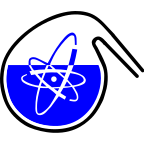Speaker
Description
Rare actinide isotopes are essential in many basic science research projects, yet working with them always features unique aspects, especially due to their limited availability and often high radioactivity. In our contribution, we will focus on actinide targets produced via molecular plating (MP) [1], a technique refined over decades and well-confirmed to be ideal in many cases. Recent highlight results that were obtained with actinide samples from our institute in accelerator experiments include studies on the synthesis, nuclear, and chemical properties of the superheavy elements at GSI Darmstadt [2-6] using Pu-244, Am-243, Cm-248, Bk-249, and Cf-249 targets; nuclear reaction studies aiding in the identification of the optimum route towards elements beyond Z=118 performed at the ANU Canberra, Australia [7]; the determination of the first ionization potential of the last actinide element, lawrencium at JAEA Tokai, Japan [8]; fission cross section studies on Pu-242 performed at CERN n_TOF [9] and the HZDR nELBE facility [10]. The MP technique is also suitable for other applications, providing sources of decay-daughters. Recently, a direct signal from the long-sought exotic low-energy nuclear isomeric state in Th-229 at an excitation energy below 10 eV was observed at LMU Munich [11], using alpha-decaying U-233, which feeds the isomer in a 2% branch.
An overview over our actinide target production and characterization capabilities will be given, and the recently developed “Drop-on-Demand” ink-jet printing technique [12] will be introduced, which overcomes some of the limitations of MP, like the need for an electrically conducting backing or the restricted sample geometry.
[1] W. Parker, R. Falk, Nucl. Instrum. Methods 16 (1962) 355., A. Vascon et al., Nucl. Instrum. Meth. A 696 (2012) 180.
[2] D. Rudolph et al. Phys. Rev. Lett. 111 (2013) 112502
[3] J. Khuyagbaatar et al. Phys. Rev. Lett. 112 (2014) 172501
[4] S. Hofmann et al. Eur. Phys. J. A 48 (2012) 62; 52 (2016) 180
[5] A. Yakushev et al. Inorg. Chem. 53 (2014) 1624
[6] M. Götz et al. Nucl. Phys. A 961 (2017) 1
[7] K. Eberhardt et al., Phys. Procedia (in press)
[8] T.K. Sato et al., Nature 520 (2015) 209
[9] T. Kögler et al., EPJ Web Conf. 146 (2017) 11023
[10] J. Lerendegui-Marco, EPJ Web Conf. 146 (2017) 11045
[11] L. von der Wense et al., Nature 533 (2016) 47
[12] R. Haas et al., Nucl. Instrum. Meth. A 874 (2017) 43

